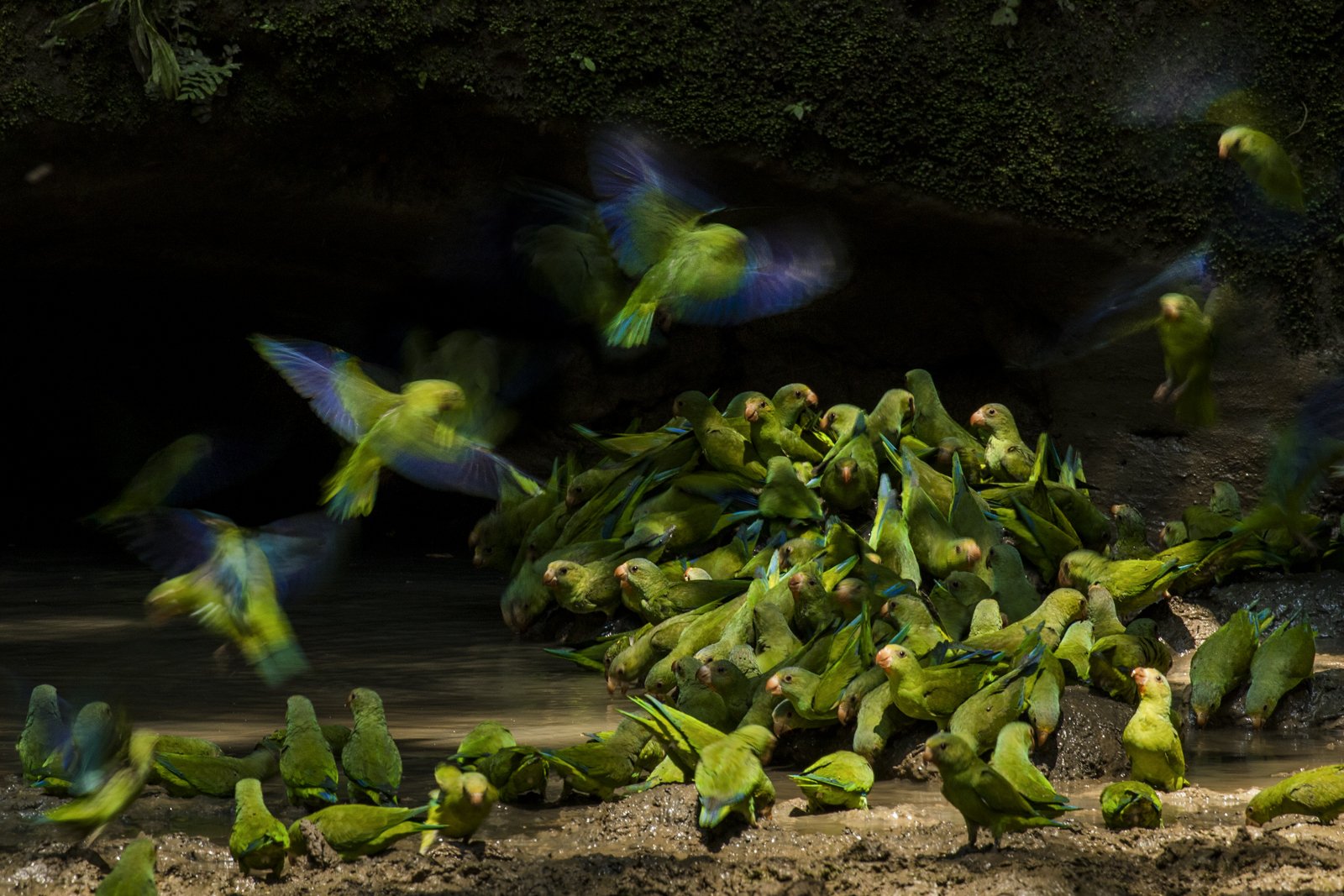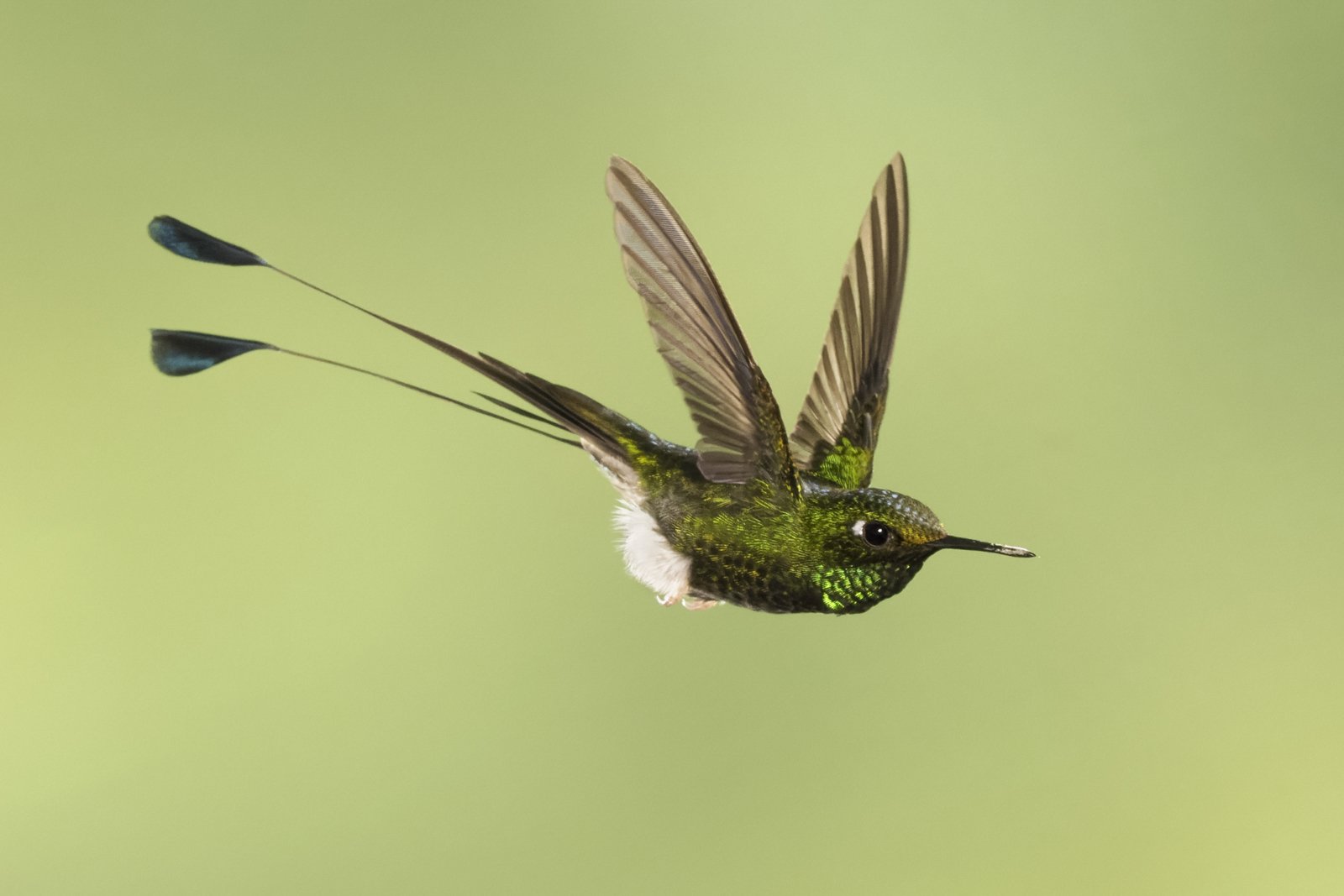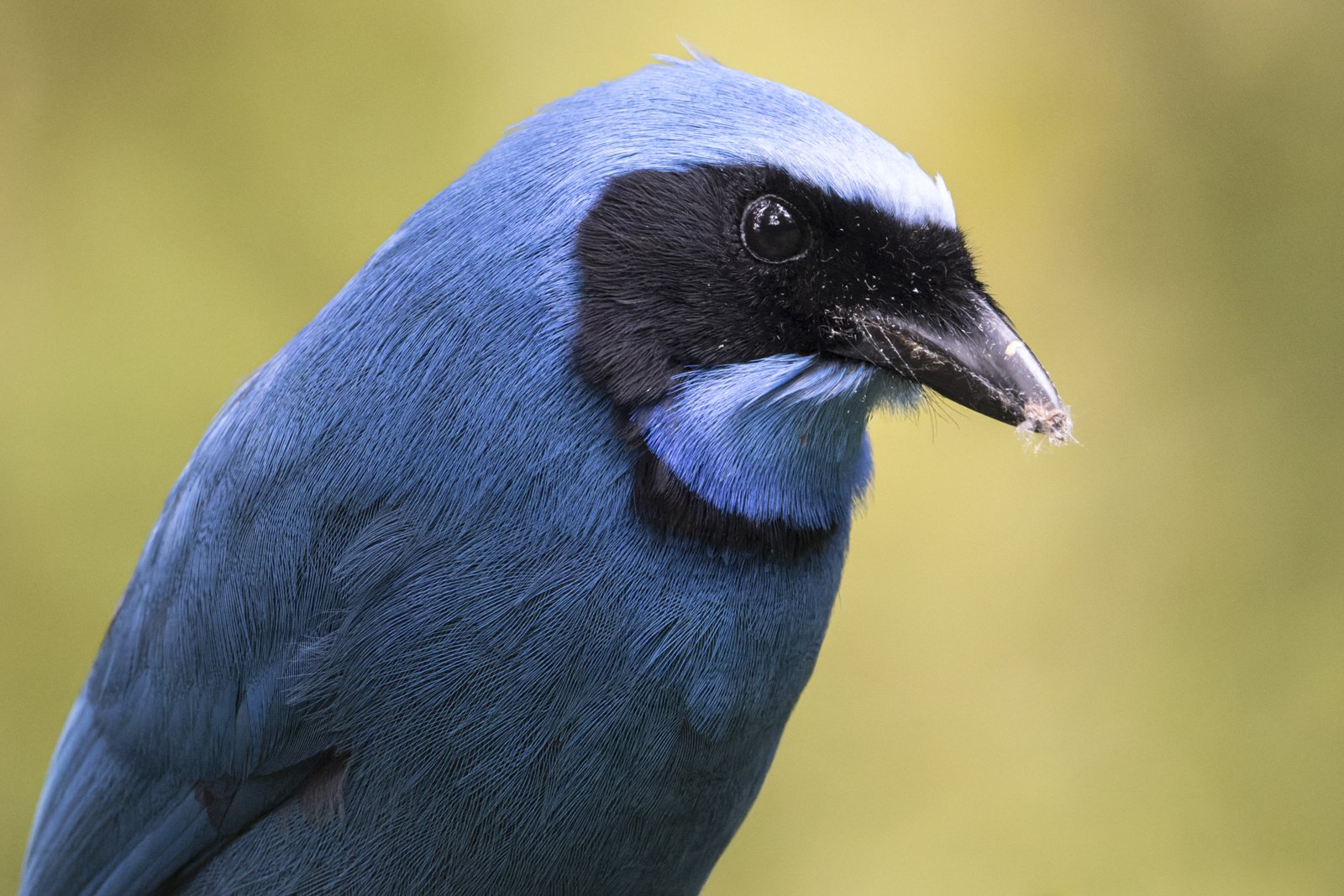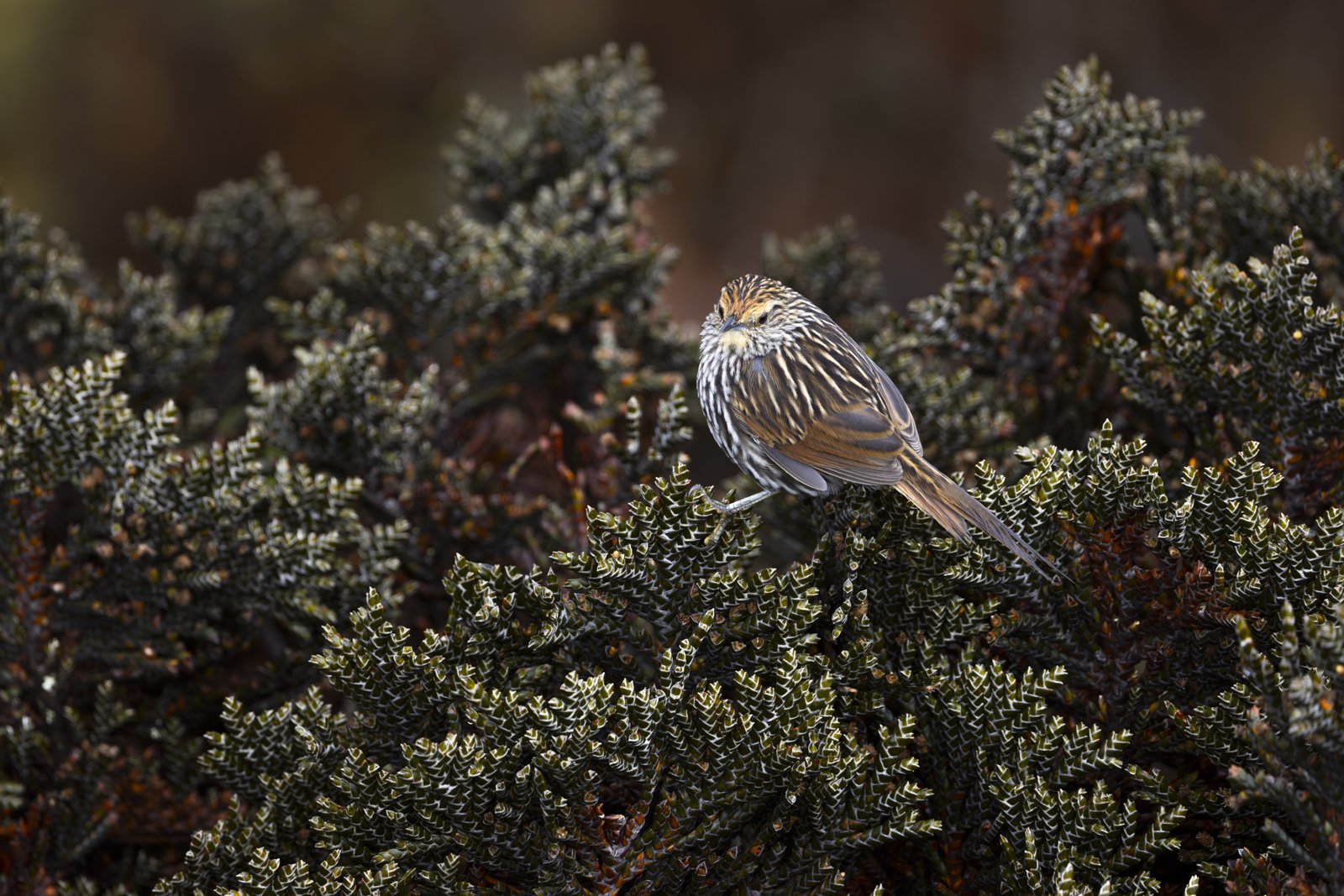
ECUADOR BIRD PHOTOGRAPHY TOUR & WORKSHOP
From the Amazon to the Andes, this is the ultimate tropical bird photography trip
October 26 - November 8 2025 (sold out)
April 21 - May 4 2026 (price TBD - book now with a refundable deposit to reserve your spot)
What makes this trip special?
This trip features a custom crafted itinerary designed to maximize our bird photography opportunities, a small maximum group size of 6 participants, and the opportunity to learn from an award-winning photography instructor.
-
Bird photography opportunities like nowhere else
Ecuador is widely considered to be the best country on Earth for bird photography. The beauty of the birds that are found in the region speaks for itself, but Ecuador uniquely provides incredible infrastructure for visiting bird, wildlife and photography enthusiasts. The lodges here are relatively easy to get to, and perfectly designed for observing and photographing avian life. During this trip, we’ll spend time photographing birds at feeding stations set up for photography, as well as in natural forest settings.

-
Hummingbirds galore!
At many of the lodges where we stay, dozens of hummingbirds are continuous visitors to feeders and flowers, where they exhibit no fear of humans. It’s a photographer’s dream! Their behaviour here makes it so much easier to capture amazing images, and work on photographic technique. From sylphs, to violetears, to sunangles, to woodstars, the Andes boasts incredible diversity of hummingbirds, with equally incredible names. About 40% of all hummingbird species on Earth can be found in Ecuador, and over 40 hummingbird species may be encountered on this trip.

-
Incredible biodiversity from the Amazon to the Andes
Experiencing the Amazon Rainforest is often considered the top “bucket list” item for nature lovers, and it’s easy to see why. With the highest biodiversity on the entire planet, we are sure to encounter a multitude of spectacular bird species, as well as amazing wildlife: monkeys, reptiles, amphibians, and more, all in some of the most spectacularly lush rainforest imaginable. This itinerary combines the Amazon with the adjacent Andes mountains, another “must visit” destination for nature lovers. Here, breathtaking mountain scenery is combined with spectacular bird life that often has little to no fear of people.


Details
-
The workshop fee is based on double occupancy and includes all accommodation, all meals, entry fees into reserves, full time guiding and instruction, and more. No additional taxes/fees apply. Single supplement (non-shared hotel room) is available for $880 USD or $1285 CAD. If there is another person on the tour from the same gender who wishes to share a room, we can pair you up (if you both agree you are a good match), to avoid paying the single supplement.
-
A booking deposit of $500 USD or $500 CAD is required to book. The deposit is fully refundable for 5 days after you book (as long as the booking is made 60 days or more prior to the start of the tour). For cancellations 120 days or more prior to tour departure, 50% of the deposit is non-refundable. For cancellations 119 to 90 days prior to tour departure, the deposit is non-refundable. Final payment of the remaining balance is due 90 days prior to trip departure. If you cancel 89 to 60 days prior to tour departure, 50% of the tour fee is non-refundable. Refunds are not available for cancellations 59 days or less prior to the tour departure.
-
Our notably small group size will make for a non-crowded, exclusive experience.
-
These dates have been specifically selected to maximize our bird photography opportunities.
-
A telephoto lens with a focal length of 300mm or greater is recommended for this trip. However, we will have closeup encounters with birds and wildlife where wide angle (eg. 15-35mm) and mid focal length lenses (eg. 70-200mm) may be useful. Wide angle and mid-focal length gear will also be useful for photographing landscapes of our scenic surroundings. As some of our time will be spent walking on trails, a portable setup that you are able to handhold is may be a good idea (for example, a DSLR or mirrorless camera with a lightweight telephoto lens such as a 100-400mm, 200-500mm, 150-600mm, etc). A tripod is also recommended (though not required), as we’ll spend time photographing birds near feeding stations where we will be stationery, and some environments we visit can have low light.
Trip Leader: Liron Gertsman
You may have seen him on CBC’s “The National”, heard his voice on CBC Radio One, or seen his work in publications such Canadian Geographic magazine, Audubon magazine, The Guardian, GEO magazine, and others. Liron Gertsman has been photographing continuously since he first got his hands on a borrowed camera at the age of five. His work has been experienced by millions in some of the largest museums across the world, including the Natural History Museum in London and the Smithsonian in Washington DC. Liron’s work has been widely recognized and awarded, sweeping the professional category of the 2022 Audubon Photography Awards, winning the grand prize of the 2023 Audubon Photography Awards, and earning a highly commended designation in the prestigious Wildlife Photographer of the Year competition. Liron has a biology degree from the University of British Columbia, which he uses to enhance his passion for art and visual storytelling, providing a scientific background to inform his understanding of the natural world.
All the photos displayed on this page are Liron’s images from his past trips to Ecuador, taken at the same places that will be visited on this trip.
In addition to Liron, we are incredibly fortunate to work with several local partners and local guides on the ground in Ecuador.
This tour is in collaboration with Eagle-Eye Tours. Importantly, we are also incredibly fortunate to work with local business and guides based in Ecuador.
Trip Partners:





























































Itinerary
This itinerary has been carefully crafted to maximize our bird photography opportunities across some of the most spectacular places in the Ecuadorian Amazon and Andes.
-
Our workshop begins in Quito, the beautiful and historic capital city of Ecuador, where we’ll have an evening orientation and dinner. Night in Quito.
-
Our trip begins with a journey into the most biodiverse place on Earth: the Amazon Rainforest. After a short regional flight to the town of Coca, we’ll travel by boat downriver into the vicinity of Yasuni National Park, where we’ll be based at an amazing and comfortable lodge for 4 nights. This region is home to an incredible array of birds, with over 600 species recorded in the near vicinity, similar to the number of species recorded in the entire country of Canada! During our stay, we will visit an amazing canopy tower, where we can get a unique vantage point on canopy dwelling birds. We also plan to experience a clay lick, where parakeets, parrots and macaws visit to ingest minerals from the soil. In addition to an incredible array of birds, we may also encounter other wildlife, such as several monkey species, caimans, and various other reptiles and amphibians as we explore the region by canoe and trail.
-
After our time in the Amazon, we’ll head west to the east slopes of the Andes, where Cabañas San Isidro will be our base for two nights. Here, we’ll begin to get a taste of the spectacular hummingbird diversity of the Andes, with species such as the breathtaking Long-tailed Sylph and Chestnut-breasted Coronet being regular visitors to the lodge grounds. The San Isidro Black-banded Owl is often encountered in this area, as well as a multitude of other bird species.
-
On days 8-9, we’ll make our way to the higher slopes of the Andes. This region is particularly spectacular, with jaw-dropping mountain views and impressive rivers and waterfalls. Our base for these two nights will be a lovely lodge just downslope from Papallacta Pass. At this beautiful cloud forest hideaway, we’ll be surrounded by more hummingbirds, including several new species for our trip. In the mornings, insects attracted to lights near the lodge attract a diversity of cloud forest bird species onto closeup perches, including flocks of beautiful Turquoise Jays, among many others. A short walk from the lodge leads us into the habitat of other cloud forest species, such as Torrent Ducks, White-capped Dippers and Gray-breasted Mountain-Toucans. In addition to time spent at the spectacular lodge grounds, we’ll also visit higher elevation habitats. Unique alpine species such as the Chestnut-winged Cinclodes and Many-striped Canastero are common here, and we’ll watch for other high-altitude specialists such as the Carunculated Caracara, Andean Condor, and Rufous-bellied Seedsnipe.
-
On days 10-13, we travel west of Quito to visit what is arguably the hummingbird photography capital of the world: the Tandayapa Valley. Well over a dozen hummingbird species regularly visit the feeders at our base lodge, where they have no fear of people. Meanwhile, tanagers, Rufous Motmots, Crimson-rumped Toucanets, and Toucan Barbets are frequent visitors to fruit feeders. While at the lodge, we’ll practice photography and lighting techniques with some photography setups at the feeding stations. The surroundings of the lodge are equally spectacular for birds, and we’ll visit additional reserves in the area to look for and photograph some of the other amazing species of this region, such as the Sword-billed Hummingbird, Andean Cock-of-the-Rock, Plate-billed Mountain-Toucan and several antpitta species. On the afternoon of day 13, we’ll make our way back to Ecuador’s capital, Quito, for our final night of the tour.
-
The morning will provide one final chance to reminisce about our experiences over breakfast as our trip comes to its conclusion.
Testimonials

Limited spaces available: register to book your spot!
Additional FAQs
-
This trip features a custom crafted itinerary designed to maximize our bird photography opportunities at some of the most spectacular sites across the Ecuadorian Amazon and Andes. Our group size will be notably small, with a maximum of 6 participants. Ecuador is widely considered to be the best country on earth for bird photography. The abundance of birds and wildlife make for both fantastic photographic opportunities, as well as fantastic learning opportunities for those looking to further their skills in bird and wildlife photography.
-
We are likely to experience a great range of weather conditions during this trip! It is likely to be the warmest in the Amazon, where the average high temperature is 30°C (86°F)., and the average low is 22°C (72°F). It is likely to be the coldest on the higher slopes of the Andes, where the average daily high is 12°C (53°F) and the average low is 4°C (40°F). Some precipitation in this region is to be expected (it is a rainforest, after all), and it’s normal to have both periods of sun and periods of rain in a single day. In other words, pack variety of clothes for a variety of expected conditions! The sun is strong at the equator, so be sure to pack sunscreen as well.
-
We will utilize several modes of transportation during this trip! Included in the trip cost is a short (40 minute) flight from Quito to Coca, our gateway to the Amazon Rainforest. From Coca, we’ll be travelling to our lodge by boat. Transportation into the amazon rainforest lodge itself and exploration of the lodge surroundings is often done by canoe. Following our return to Coca after our first lodge of the trip, we will get around by vehicle. While the main highways are paved, you can except some of the smaller side roads used to travel to some lodges and reserves in the Andes to be winding and bumpy at times.
-
A typical day: Most days will begin with optional early morning bird photography around the grounds of our lodge, where many species can be seen up-close visiting feeders and foraging through the rainforest from the first light of dawn. After breakfast, we’ll commence our day’s formal activities, which may include more on-site photography, or trips to adjacent reserves. On some days, we may have early morning departures to get to reserves where certain bird activity happens first thing in the morning, such as the lek of the Andean Cock-of-the-Rock. We’ll be back at our base lodges for dinner. After dinner hours, we will have optional technique workshops and post-processing time on some nights. During the trip, we may also have optional evening nocturnal activity walks, using flashlights to look for a variety of nighttime creatures on the trails around our lodge. While small, there are some spectacular amphibians, reptiles and insects that are worthy of our attention, but easily overlooked.
-
Yes! Ecolodges and reserves in Ecuador, including the ones where we will stay and visit, often have several types of feeding stations. Fruit feeders attract tanagers, toucans, barbets, and more. Nectar feeders attract hummingbirds. Many lodges also have a “moth light”. These lights attract insects overnight, and a variety of forest birds (woodcreepers, flycatchers, sparrows, and more) can often be found visiting in the morning to forage on insects. We will also visit a couple reserves where local caretakers feed worms to elusive forest birds, such as antpittas. Many of the feeding stations at the lodges and reserves are set up with mossy perches, providing photographers with a photogenic setting to capture images. Flowers can also be used at hummingbird feeding stations, to help capture images of hummingbirds. For those who want, there will also be opportunities during this trip to do “multi-flash” hummingbird photography, a technique using artificial lighting that can capture remarkable studio-like images of hummingbirds in flight.
-
While the vast majority photography activities on this trip won’t require extensive physical activity, some of the sites we visit will require short hikes (~1km) on uneven terrain. While hiking is not a large part of the trip, good footwear for muddy and uneven trail conditions are recommended if you wish to explore the rainforest on foot. All activities are optional, and incredible photography opportunities can be found in the immediate vicinity of all of our lodges. So, there is much to keep one entertained if you wish to opt-out of any activities in favour of more relaxed photography opportunities. One lodge we will stay at has a 50-100 meter staircase leading to the entrance, and the ability to climb some stairs will enable you to visit a 36-metre (118 foot) canopy observation tower in the Amazon. Finally, altitude may be a consideration for some. Quito, the capital city of Ecuador where our trip begins and ends, is at 2850 meters elevation (9350 feet), which will be our highest overnight location of the trip. During the day, we may make one or two short (few hour) excursions up to 4000 metres elevation (13120 feet) during the “high Andes” portion of the trip.
-
Flights to and from our start city (Quito), alcoholic beverages, and travel insurance (recommended) are not included.
-
With the exception of the first and last night in a modern hotel in Quito, we’ll be staying at eco-lodges in the rainforest. These accommodations are high-quality and clean, designed to provide the comfort that visitors would expect back home. Some are a bit more rustic and cozy in feel, others are more high end and fancy in feel, but they all provide fantastic opportunities for bird and wildlife photography in their immediate vicinity.
Food is often considered to be a highlight at these lodges. Each lodge will have a professional chef on site, and you can often expect to enjoy a variety of meals, from traditional Ecuadorian dinners, to gourmet international cuisine. When we venture out for day trips to other reserves, we’ll bring packed lunches and snacks with us, or have meals provided by the chefs at other reserves.
-
Over 1000 bird species have been recorded across all the locations we will visit, and we are likely to encounter hundreds of these, as well as several species of other animals. There’s too many to list, but a small sample of our many target species include Torrent Duck, dozens of hummingbird species including the Long-tailed Sylph and Sword-billed Hummingbird, Hoatzin, Toucan Barbet, Plate-billed Mountain-Toucan, Cobalt-winged Parakeet, Scarlet Macaw, Chestnut-crowned Antpitta, Andean Cock-of-the-rock, Turquoise Jay, Green Jay, Golden Tanager, Scarlet-bellied Mountain Tanager, Blue-winged Mountain Tanager, and many, many more. In addition to the birds, we are likely to encounter several species of reptiles, amphibians, and primates.
-
Many of the birds and wildlife in the places we visit have little to no fear of people (yes, hummingbirds may even land on you!). Other species may require a slightly longer viewing distance. Photography ethics are important to us, and we will aim to have minimal disturbance to the birds and wildlife that we encounter, and the places we visit.
-
As much or as little as you want! The group size is designed to allow personalized attention. In addition to field instruction, workshop activities will include optional indoor seminars and post-processing sessions in the evenings.
-
On some days, much of our time will be spend close to the immediate surroundings of our lodges. On other days, we’ll go for longer excursions by vehicle to neighborhooing reserves. However, all activities are completely optional; guests are welcome to take time to rest as desired (and the immediate surroundings of our selected lodges all provide amazing bird watching and photography opportunities for those wishing to spend some time experiencing the area at their own pace).
-
Single supplement (non-shared hotel room) is available for $580 USD / $830 CAD. If there is another person on the tour from the same gender who wishes to share a room, we can pair you up (if you both agree you are a good match), to avoid paying the single supplement.
-
During this trip, we will stay at 5 different accomdations across the Ecuadorian Amazon and Andes. See the itinerary section above for more details!
-
We aim to have a fun, positive, easy-going and non-competitive group atmosphere! While the goals of the workshop are to achieve fantastic photos and practice and develop our photography technique, we want to make every moment enjoyable, both in and out of the field.
-
Yes! Carbon offsets are purchased for all emissions associated with tour activities.
-
The $500 deposit is fully refundable for 5 days after you book (as long as the booking is made 60 days or more prior to the start of the tour). For cancellations 120 days or more prior to tour departure, 50% of the deposit is non-refundable. For cancellations 119 to 90 days prior to tour departure, the deposit is non-refundable. If you cancel 89 to 60 days prior to tour departure, 50% of the tour fee is non-refundable. Refunds are not available for cancellations 59 days or less prior to the tour departure.
-
Yes! We will reach out to you to find out your dietary preferences in advance of the trip.
-
Most of the accommodations we utilize during this trip are remote, one-of-a-kind, and offer specific photographic opportunities not available elsewhere. So, alternate accommodations are not possible for this trip.
-
Smoking is prohibited during group workshop activities.
-
Certain immunizations may be recommended or required for travel to certain parts of Ecuador, and some travelers may opt to bring medications for altitude and malaria. Please consult a travel clinic or other qualified travel health expert in advance of this trip.


